Three years ago I was online looking for places to go in Europe on my second (second EVER) vacation, having just returned from my first (EVER) vacation in Rome, Assisi and Sorrento. I was looking at the UK, some areas of France, possibly Germany… and then I stumbled upon pictures of Le Cinque Terre, “the five lands”, in the Italian Riviera.
I was sold. These five tiny fishing villages hug the coastline of the Ligurian sea, connected by a network of hiking trails that go over and around the cliffs and hills that keep the small towns nestled tightly in their midst. It looked like a fairy land, the kind of feeling you get when looking at pictures of Venice – like taking a step through time to a place that must look now as it did generations upon generations before. And the water! Amazing shades of teal and blue and green, crashing onto the beaches and rocks in a spray of white foam!
Unfortunately it would be the water – the same water that has sustained the local economy for centuries – that brought destruction and catastrophe to the Cinque Terre in October, 2011. Hit by massive rains, the small streams that usually help the water pass from the steep hills surrounding the towns down to the sea were overrun, the drainage systems clogged, unable to accomodate the torrential downpour. Sheets of water crashed down from the hills, flooding the towns, pushing cars, furniture and people out to sea (several victims were found washed up in France) and burying the ground floors in a thick mud.
Needless to say, I wasn’t able to visit this beautiful region in 2012, but when I decided to come to Milan one of the first things I did was check up on the rebuilding efforts. The five villages of le Cinque Terre are now, once again, open for business after long and grueling local efforts to restore their homes to their former glory. I called a friend who lives in Lugano and we rented an apartment in Vernazza, one of the five towns, for two nights in March. A-hiking we would go!
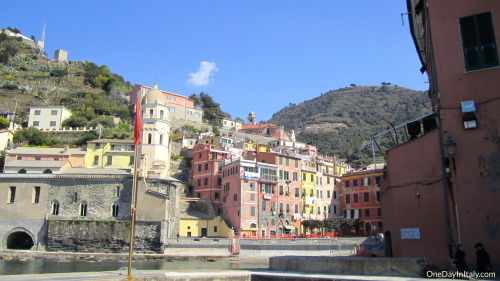
Most of Italy in March is rather empty of tourists, which I like. It may sound hypocritical (being a tourist myself), but I prefer to travel during low-traffic periods when locals outnumber tourists and its easier to get a real feel for a place. Some things may be closed, waiting for tourist season to begin, but in general I’ve never run into problems.
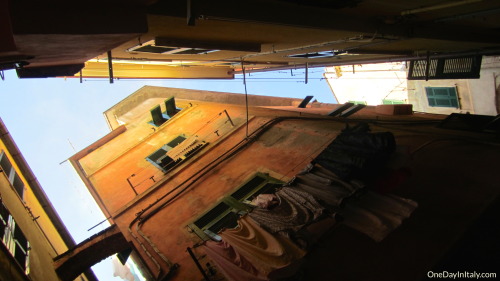
When we arrived in Vernazza, we went to buy our pass to hike the trails in Parco Nazionale delle Cinque Terre at the small train station in the middle of town. As of March 2014, the prices for a hiking pass only were €6 for one day and €9,70 for two days. If you wanted unlimited train travel between the five towns and La Spezia (which we didn’t, since we would only be taking one train back to Vernazza each night), prices were €12 for one day and €23 for two days.
We, however, didn’t have to pay. It turns out that the trails were formerly “closed” for the winter season, which gave me a little bit of a panic attack. Would we have come all this way, planned this entire trip and then not be able to hike??
No, the young guy behind the counter explained – we could still hike (though, perhaps not officially), but the check points would all be closed. There would be no one to check our passes, even if we bought them.
That was a turn up for the books.
He also let us know that the Via dell’Amore, the short, easy trail between Manarola and Riomaggiore, was completely closed, not accessible to even “unofficial” hikers.
Before setting out on our first hike to Monterosso al Mare, the only town to the West of Vernazza, we walked down to the sea to admire the colors of the water lapping up against the rocks.
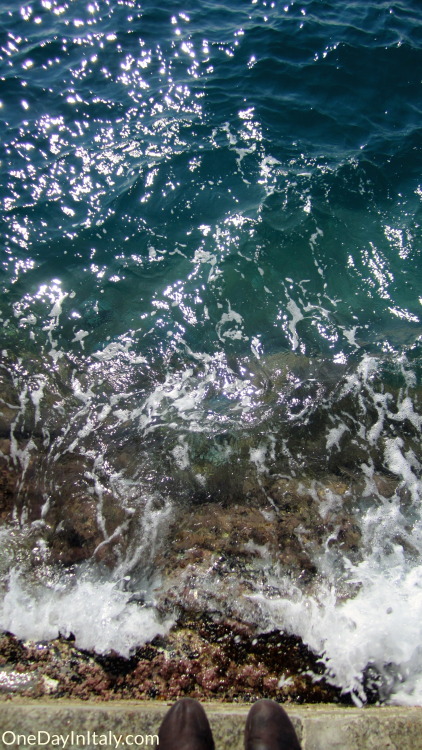
Then we were off!
I have to give a small warning here: I had heard about the amount of stairs on the trail leading up to Corniglia, the town directly east of Vernazza that sits up on a cliff, but I hadn’t read anything that warned that ALL of the trails have steep ascents. Tons and tons and tons of rough-hewn stairs led up the mountain (call it a hill if you want; if felt like a mountain!) and then back down again, the footing not always so sure as small rocks moved under our feet. After a while – and I do mean a while - the trail evened out, narrowed and ran along the edge of the mountain, providing incredible views of the sea and, occasionally, the towns on either side.
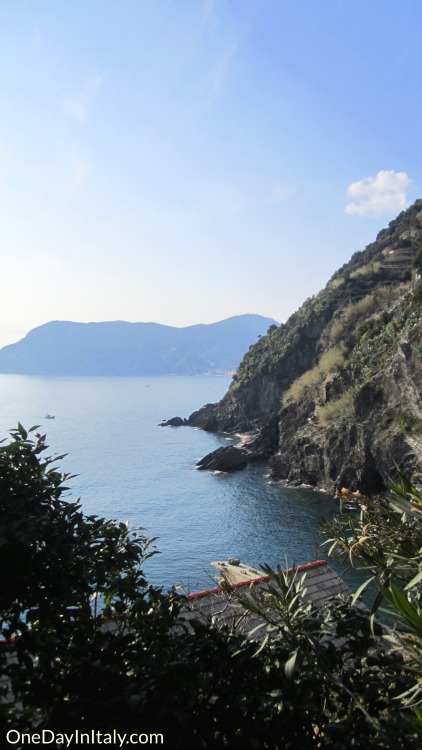
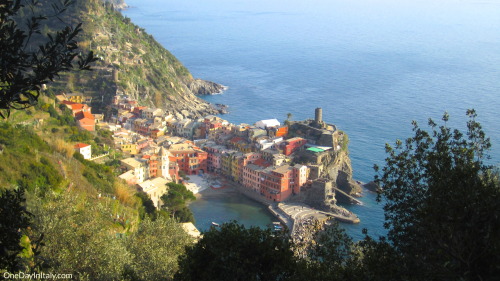 (Vernazza from above)
(Vernazza from above)
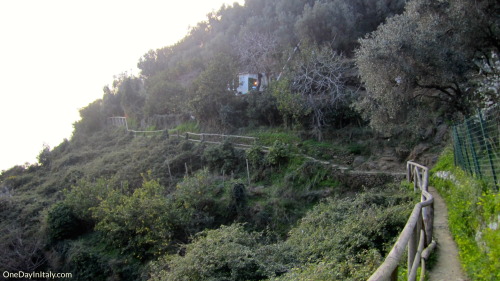
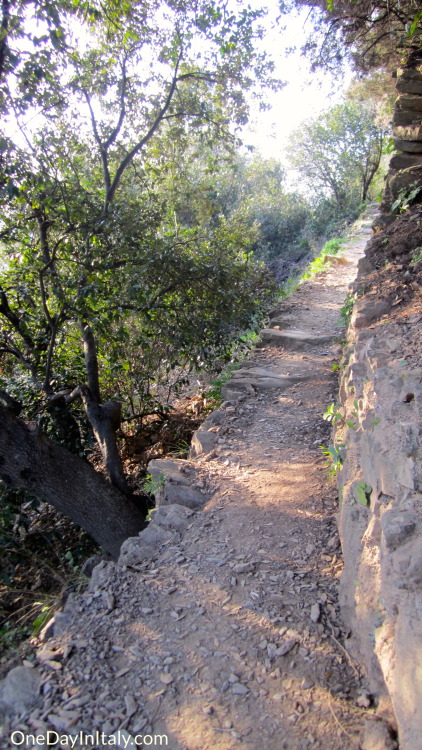
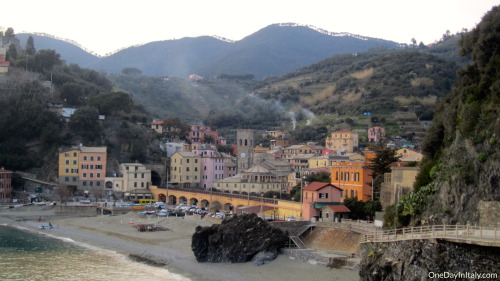 (Monterosso al Mare; you can find more photos of Monterosso al Mare in the Photo Gallery section)
(Monterosso al Mare; you can find more photos of Monterosso al Mare in the Photo Gallery section)
About two and a half hours later (with lots of stops for pictures) we arrived in Monterosso al Mare, tired but exhilarated. We stopped for an aperitivo (or two). I tried a warm liquor called “china”, bitter with a slice of lemon rind but served with sugar, if desired (which it was), and thought it the perfect thing on a cold night. Then we stopped into a local restaurant for dinner. If you’re in the area and have the chance to try Minestrone alla Genovese, do! It’s nothing like any minestrone I’ve had before; it was thick, hearty, pesto-y and oh-so-good.
We caught a late train back to Vernazza and woke up early the next morning to hike in the other direction. First stop: Corniglia!
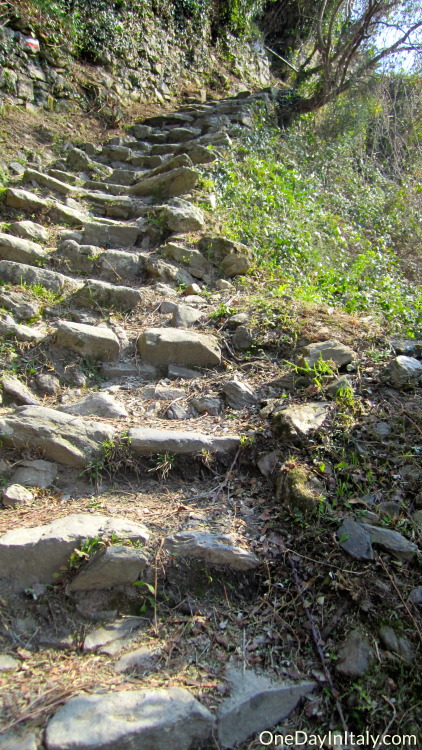
 (Vernazza from above, on the trail toward Corniglia)
(Vernazza from above, on the trail toward Corniglia)
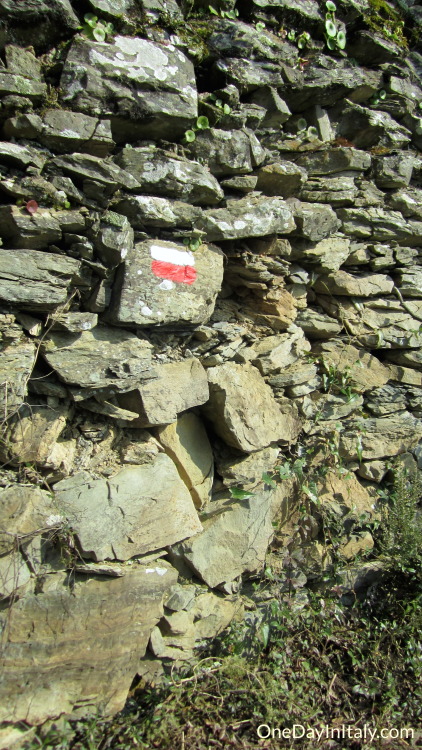
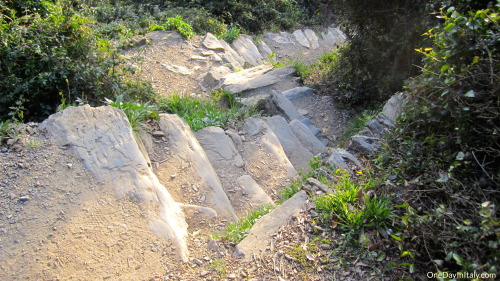 (The “staircases” were a bit treacherous.)
(The “staircases” were a bit treacherous.)
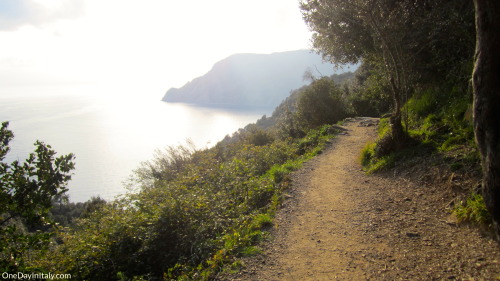
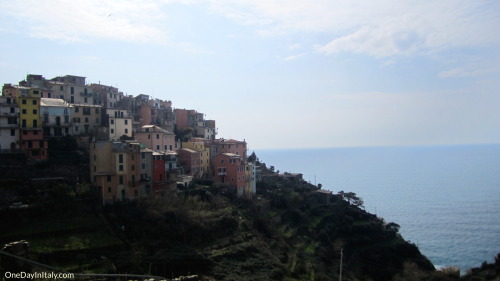 (Corniglia; you can find more pictures of Corniglia in the Photo Gallery section)
(Corniglia; you can find more pictures of Corniglia in the Photo Gallery section)
Corniglia may have been my favorite of the Cinque Terre towns. It doesn’t have a beach, but I’m not really a beach person anyway. What it did have were quaint, narrow streets with little bars and shops tucked in every corner and an absolutely incredible view of the sea.
After a great lunch in a little pizzeria in Corniglia overlooking the water (lasagna with pesto – yum!), we asked where the entrance for the trail to Manarola was and were told that the “normal” one (the easy one) was closed. We could still reach Manarola, though, by hiking over the mountain and then back down again, but it would be a two and a half hour hike up through Volastra instead of the one hour hike we were expecting. Wonderful.
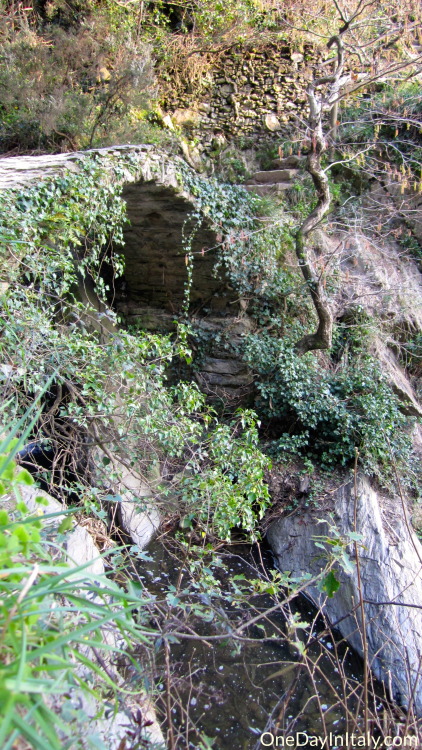
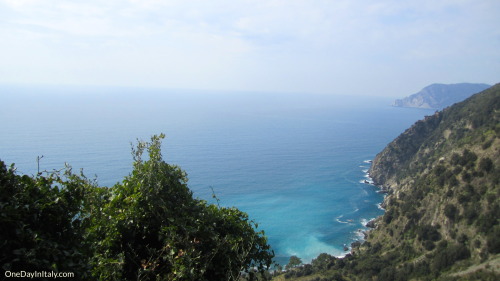
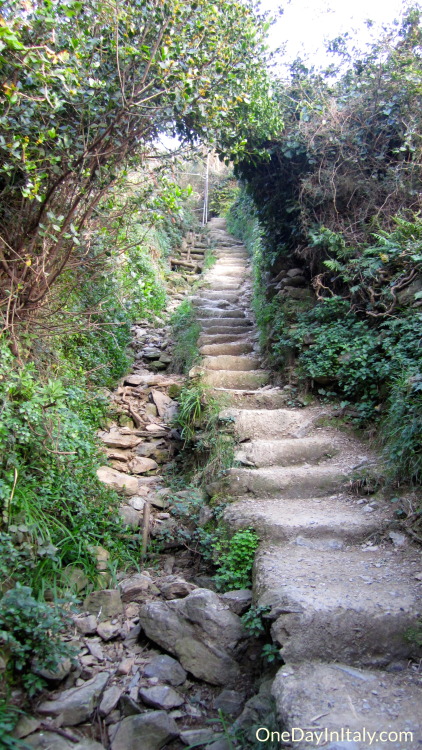
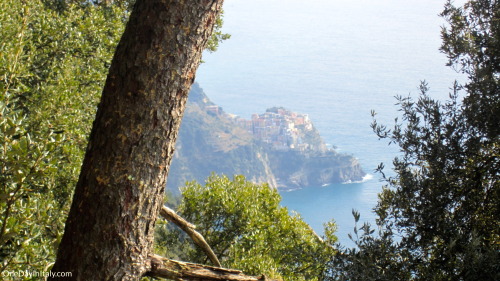 (Manarola through the trees)
(Manarola through the trees)
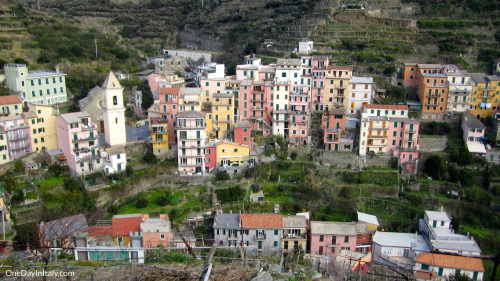 (Manarola; see more photos of Manarola in the Photo Gallery section.)
(Manarola; see more photos of Manarola in the Photo Gallery section.)
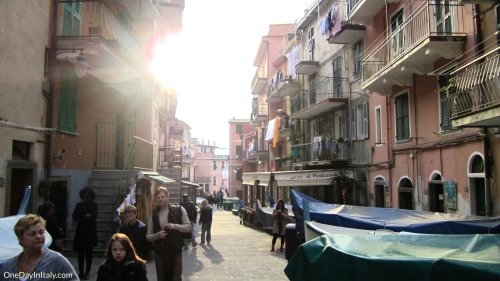
We got a gelato in Manarola (noticing a food theme, here? Yeah, we did too) and then went to the train station to buy a ticket to Riomaggiore. It would be another long hike from Manarola to Riomaggiore since the Via dell’Amore was closed and not only were we tired but we were also a bit worried about the time. A train strike was scheduled to start that evening (which totally messed up our plans to return to Milan the next day) and we didn’t want to be stuck in Riomaggiore, unable to get back to Vernazza in the dark.
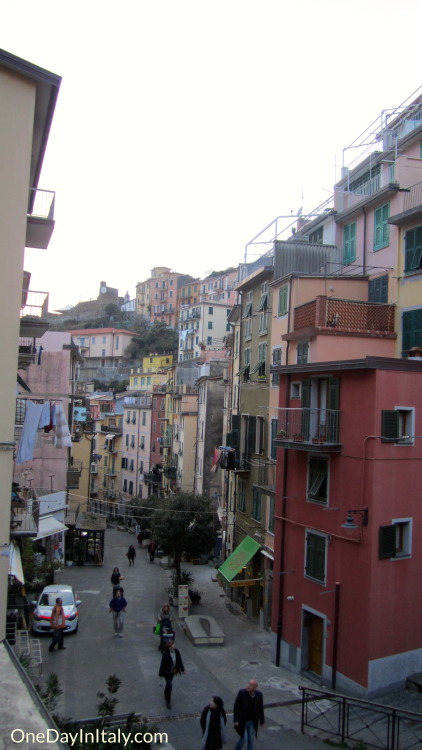 (Riomaggiore; see more photos of Riomaggiore in the Photo Gallery section)
(Riomaggiore; see more photos of Riomaggiore in the Photo Gallery section)
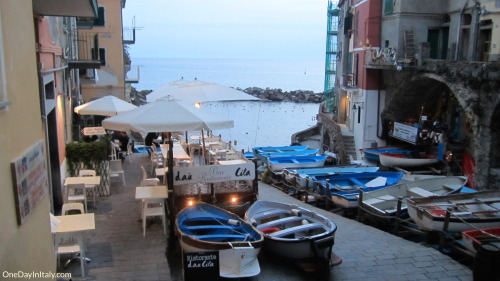
We poked around in some shops in Riomaggiore (food shops, of course) and bought some things to carry back with us on the train to Vernazza. We had some time before the last train so walked out to the sea, listening to the waves and watching them crash up on the docks. The lights from the village were starting to come on, giving a lovely glow in the twilight hours. It was cold enough to put on our jackets as the sun disappeared, and we just sat for a time thinking back on the day, the hikes, the villages, all of the many stairs, the incredible views, beautiful weather, wonderful food, kind people…
Needless to say, it was a short but enchanting stay and I’m looking forward to returning again one day. Le Cinque Terre were worth the wait.
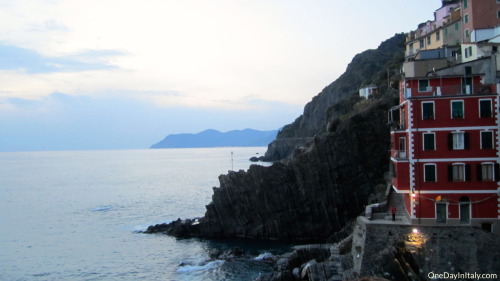
Comments
comments












Leave a Reply